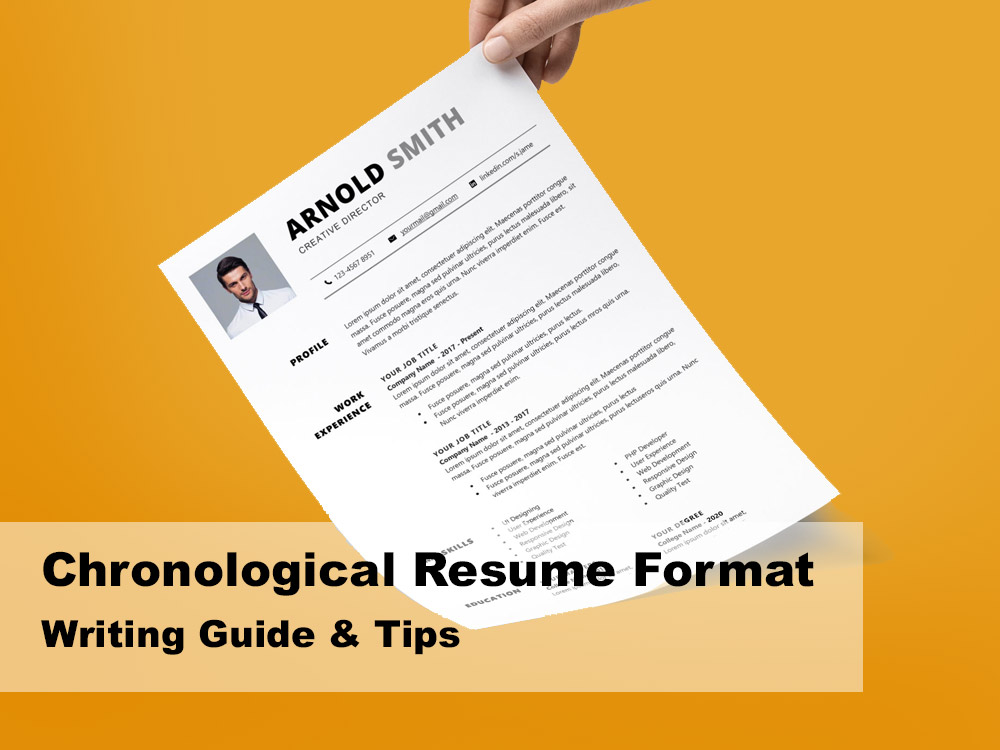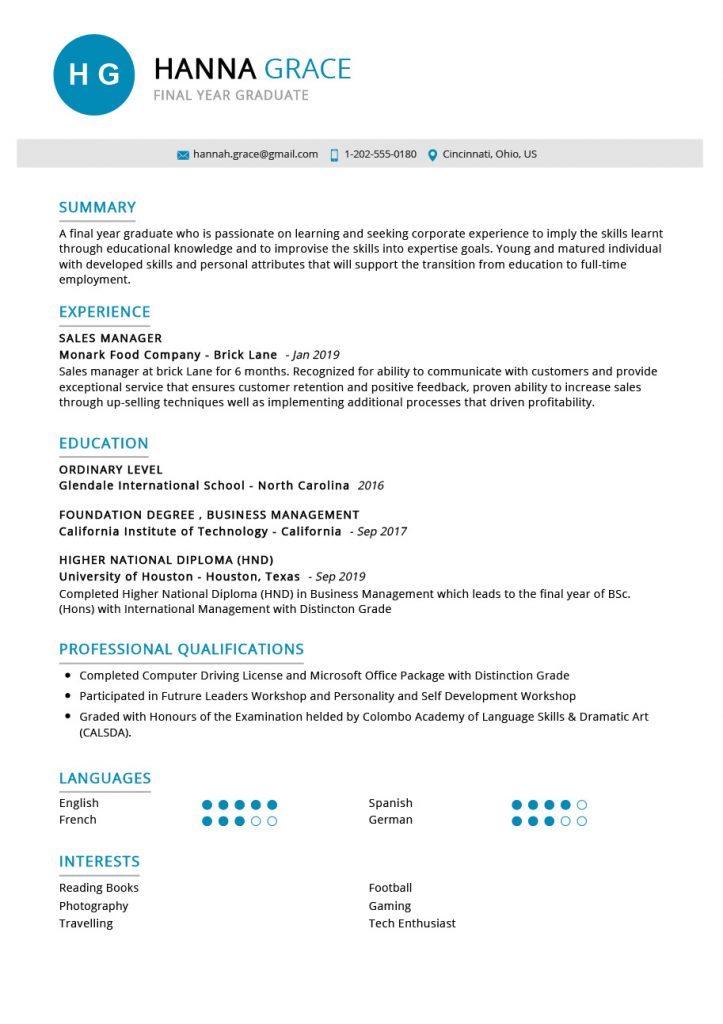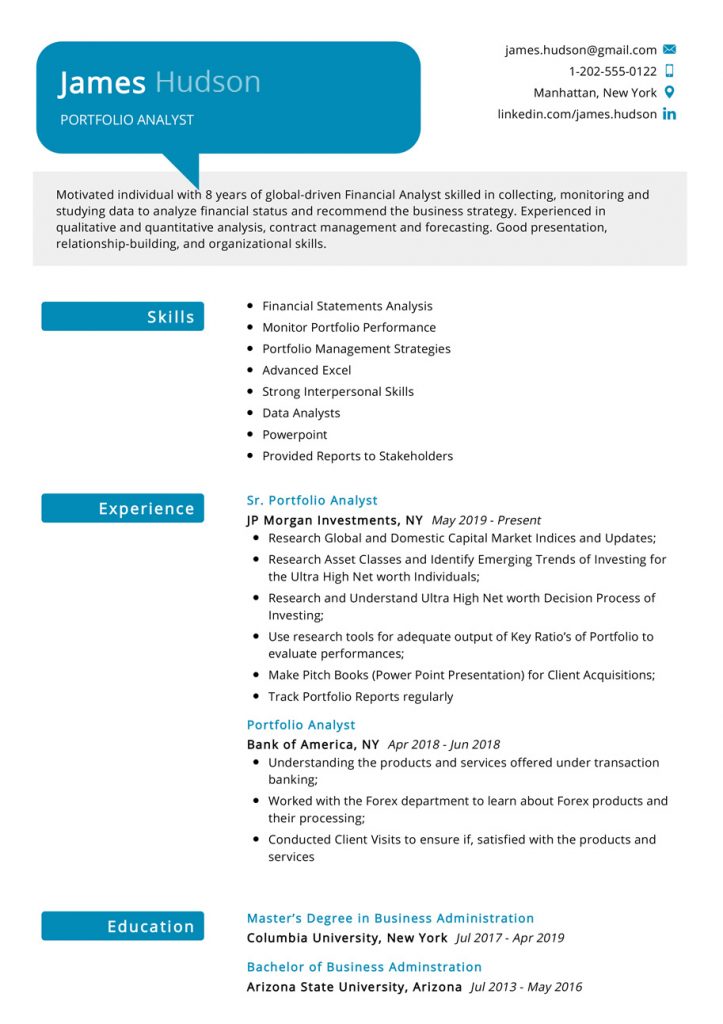
What is the Chronological Resume Format?
Without question, a chronological resume is the most commonly used option when job hunting. Sure, it’s one of many resume formats, but this tends to be the one that you learn about in school or post-secondary institutions that help you prepare for the commercial world that is waiting for you. But what do you actually know about it? Are you using it in the best way for your job prospects? Here’s what you should know about the chronological resume format and how it can best work for you.
What features does a chronological resume have?
This resume, as the name may tell you, focuses its power on the story of your life throughout the years. This resume emphasizes your work history, going from the most recent job and working its way back to the first job you ever had. This gives your potential employers an easy, detailed look into your work history and helps them understand what positions you’ve held as well as for how long.
There is also a section for your education, also listed in reverse chronological order. There is space in this area to outline the focus of your degree(s) as well as emphasize how high an academic level you achieved as a whole (B.A, M.A, Ph.D., etc).
At the bottom, there are a section for special skills and/or achievements. You can list (also in reverse chronological order) any academic or work-related achievements that you think might interest in your employer. The skills area is intended to be short and sweet, targeted to the job position that you’re applying for.
How is a chronological resume effective?
As mentioned, the chronological resume format is thought to be the most popular used in schools, entry-level jobs, and even higher-level positions. If it’s that popular, there’s got to be a reason or two, right? Here are some of the biggest ways in which this format can be effective in helping you land your job.
- All work and educational experiences are laid out for potential employers to see: Whether good or bad, an employer will be able to learn a lot about how helpful you could be to their company by taking a look at your work history and experience. If you are someone who jobs hops, it might be a red flag. However, if you’ve held similar positions in a few companies over the years, it could be a huge asset. Showing that you’ve worked several jobs is always good, too. It shows that you have initiative and that you can hold a job for more than 2 months.
- It gives you a place to put your education in detail: While it isn’t at the top of the resume, there is still a large section for your education. If you are someone with a few degrees, especially those that are related to the positions of which you are applying, this will give you the space to list degrees, educational focuses and even GPA, if applicable.
- It’s their favorite: Those who are reading resumes to hiring someone don’t want to waste time trying to figure out what you’ve got on a resume when it looks different from the others. As such, some recruiters will actually hire someone in part due to the use of this resume style. They can scan work experience quickly and see what they need to and then add you to the maybe pile. That’s not to say that you have to use this format to get a job, but it is a detail to think about.
Create your professional resume for free using our resume builder!


How to make your resume the best it can be:
Since recruiters and hiring teams are used to seeing a chronological resume, you won’t stand out from the crowd. While it can mean that you will be considered along with everyone else, it can also be a bad thing because, well, you are being considered along with everyone else. It’s important that you do what you can to make your resume stand out. Here are some chronological resume tips that will make your pop and stay memorable even amongst the sea of others.
- Cherry-pick your past jobs: While the focus on reverse chronological order is on your employment history don’t make the mistake of thinking you need to include every single job on your resume, especially if you’ve worked quite a few. For example, if you’re applying for a mid-level position in a law firm, they don’t care that you were a paper carrier 15 years ago.
- Tighten, tighten, tighten: When you are listing your previous jobs and the brief explanations that go with them, make sure that you keep them short and sweet. Include only the critical details and cut out anything that isn’t necessary for respect and comprehension of the job you’ve done.
- Choose a template: To help with detail, spacing and heading use, find a template to help you out. Since this is the most popular resume format, you’ll find tonnes and tonnes of templates online. Choose one that feels right for you and allow it to guide you on what goes where, what gets bolded, etc.
- Don’t leave a section for references: This is a detail that most people don’t even know about. This kind of resume speaks for itself, so do not create a section for references or even have a statement in there about having reference information on request. When you get the interview for the company, bring your reference information with you so that you can offer it to them then if they request it. You can still be prepared o give it to them without actually giving it to them.
You are a hard worker and you’ve put in the time at other companies. This effort and focus will show up with the use of the chronological resume if you use the right tips and guidance to help you make the most out of it. These should help you certainly get to the maybe pile and hopefully the job!
Frequently Asked Questions
The most common type of resume, a chronological resume, lists your work history in order of date, with your most recent position at the top. Your education and skills are listed after your experience. Chronological resumes are best for people who have a steady work history and clear career progression.
In a chronological resume, your experience is listed in reverse chronological order, with your most recent position at the top. Your education and skills are listed after your experience.
There are a few things you can do to make sure your chronological resume is effective. First, make sure your experience is listed in reverse chronological order. Second, make sure your education and skills are listed after your experience. Finally, make sure your resume is clear and concise.
Some common mistakes to avoid when creating a chronological resume include listing your experience out of order, including irrelevant information, and using too much or too little information.
There are a few ways you can use a chronological resume to your advantage. First, a chronological resume can help you demonstrate your career progression. Second, a chronological resume can help you highlight your skills and experience. Finally, a chronological resume can help you show that you are a well-rounded candidate.
Here are a few tips for creating a chronological resume:
1. Start with a clear and concise summary of your qualifications.
2. List your work experience in reverse chronological order, starting with your most recent position.
3. Include your education and skills after your work experience.
4. Use clear and concise language throughout your resume.
5. proofread your resume carefully before submitting it.
There are a few things you can do to make your chronological resume stand out. First, make sure your summary of qualifications is clear and concise. Second, highlight your skills and experience in your work history. Finally, use clear and concise language throughout your resume.
There are a few ways you can use a chronological resume to your advantage. First, a chronological resume can help you demonstrate your career progression. Second, a chronological resume can help you highlight your skills and experience. Finally, a chronological resume can help you show that you are a well-rounded candidate.
Related Articles:
How to Write a Resume
What is a Functional Resume?
Best Resume Formats

